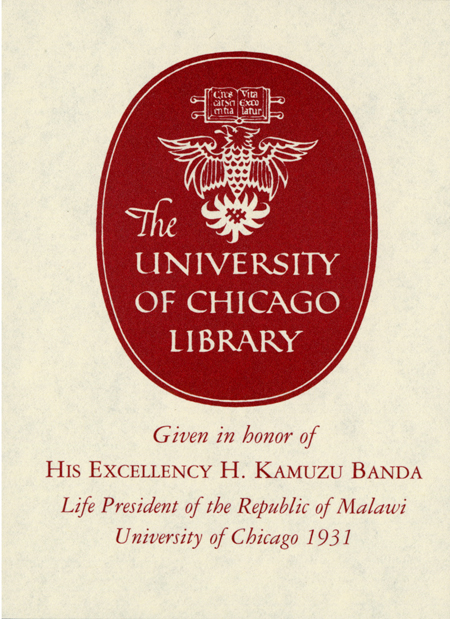Emigration, brain drain and development : the case of Sub-Saharan Africa /
Saved in:
| Author / Creator: | Tanner, Arno. |
|---|---|
| Imprint: | Helsinki : East-West Books Helsinki : Migration Policy Institute, 2005. |
| Description: | 183 p. : ill. ; 12 cm. |
| Language: | English |
| Subject: | |
| Format: | Print Book |
| URL for this record: | http://pi.lib.uchicago.edu/1001/cat/bib/5927114 |
Table of Contents:
- 1. Charts and Diagrams
- 2. Foreword
- 3. Introduction
- 4. Research Question and Methodology
- I. Emigration and Brain Drain in a Semantic, Substantive, and Logical Context
- 5. Emigration, Brain Outflow, and Brain Drain
- 5.1. Definitions
- 5.2. Voluntary labor emigration often reaches a "win-win-win" constellation
- 5.2.1. The insanity of hampering individual initiative
- 5.2.2. Country of origin benefits: Beyond poverty and orerpopulation relief
- 5.2.3. A country in need of labor force benefits
- 6. Brain Outflow is Increasingly Turning to Brain Drain
- 6.1. In most immigration policies, brain drain is traditionally not mentioned
- 6.2. Does optimal integration in the destination country decrease beneficial returns?
- 6.3. The acute challenges of brain drain for the country of origin
- 6.3.1. Even returning brain outflow may be brain drain
- 6.3.2. Is there a vicious cycle of brain drain encouraging further emigration?
- 6.4. Can Money Remittances Halt Brain Drain?
- 6.4.1. Do remittances last?
- 6.4.2. The increasing gap between the haves and the have-nots
- 6.4.3. Do money remittances actually discourage rather than stimulate?
- 6.4.4. Glimmers of hope for the future?
- 6.5. Other ways of aiding the countries of origin: Diaspora contacts, social remittances, and philanthropy benefits
- 6.5.1. The limitations to diaspora contact benefits
- 6.5.2. Some products of successful diasporas: social remittances and valuable information
- 6.5.3. Diaspora philanthropy: more coordinated macro benefits
- 7. Discussion
- II. Brain Drain, Development, and Foreign Aid in Selected Sub-Saharan Countries
- 8. African-International Labor Emigration
- 8.1. From slave ships through student exoduses to brain drain
- 8.2. Around the millennium: further accelerating volumes and intensifying trends
- 8.3. Why is contemporary emigration intensifying?
- 8.4. Some developmental effects of brain drain
- 8.4.1. Emigration removes the middle class, halting democratic processes
- 8.4.2. Some developmental and economic effects
- 9. Today's Labor Emigration - Development Links in Malawi, Tanzania, and Zambia
- 9.1. Malawi: Will there be anyone to stop AIDS?
- 9.2. Tanzania: Will better primary education ever lead to Tanzanian science?
- 9.3. Zambia: Will government measures stimulate excessive teacher emigration?
- 9.4. Help through emigrant returns, remittances and diaspora contacts in Sub-Saharan Africa?
- 9.4.1. Small absolute and relative number of returns
- 9.4.2. No systematic patterns of macro-benefiting remittance flows
- 9.4.3. The future promise of social remittances, diaspora contacts, and philanthropy in Sub-Saharan Africa?
- 10. How Can Erratic Aid Considerations and Focuses Actually Sustain and Exacerbate Brain Drain From Africa?
- 10.1. The "global competitor" and "head-in-the-sand" mentalities
- 10.2. Foreign aid may downright contribute to brain drain
- 10.3. The dilemma of aiding health education and brain drain
- 10.4. Foreign aid failures are indirectly causing brain drain
- 11. Finnish Development Aid in Future Alleviation and Prevention of Brain Drain
- 11.1. Suggestions for preventing and minimizing brain drain with developmental measures
- 11.1.1. Comprehend the connection between emigration and brain drain
- 11.1.2. Continue fighting poverty, corruption, human rights violations, and AIDS
- 11.1.3. Channel aid towards credible scientific, educational, and health institution, and entrepreneurs
- 11.1.4. Aid institutions with country-specific curricula and enhance domestic job markets
- 11.1.5. Support international, Pan-African, and regional organizations with comprehensive anti-brain-drain programs
- 11.2. Additional proposed solutions for a country already suffering from brain drain
- 11.2.1. How to facilitate return?
- 11.2.2. Aid supporting the economically and socially sustainable use of remittances and philanthropy
- 12. Conclusion 1: The Negative or Positive Scenario?
- 13. Conclusion 2: Some Key Solutions
- 14. Bibliography
- 15. Appendix: Finland's Development Policy 2004 and Migration


